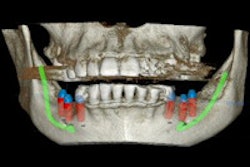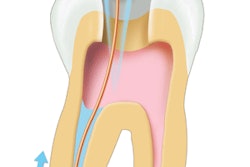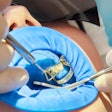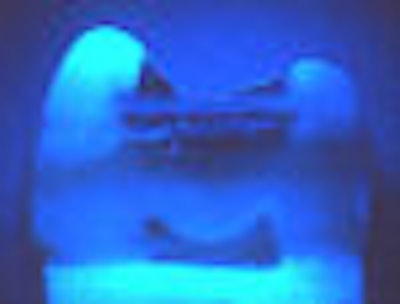
A Dutch researcher is peering into cracks in patients' teeth to determine just how long repairs to those cracks can last. At the International Association for Dental Research (IADR) annual meeting this month, Niek Opdam, D.D.S., Ph.D., assistant professor in the department of preventive and restorative dentistry at Radboud University Nijmegen Medical Centre in the Netherlands, presented results showing that his repairs can last at least seven years, if not longer.
Based upon his findings, Dr. Opdam believes the current American Association of Endodontists' recommendation that root canals be performed on cracked teeth exhibiting thermal sensitivity should be reconsidered.
There has not been a great deal of research on the repair of cracked teeth, especially not on the long-term outcomes of such repairs. Dr. Opdam's team previously published a follow-up of 40 cracked teeth repaired with or without cusp reduction. Six months after the repairs were completed, 30 of the teeth were functioning well, but 2 needed a root canal and only 20 were totally symptom-free (Operative Dentistry, July-August 2003, Vol. 27:4, pp. 327-333).
The seven-year results Dr. Opdam presented at the IADR meeting involved these 40 patients plus one additional patient. In each case, Dr. Opdam removed the amalgam, etched the preparation, rinsed and dried it, then applied Clearfil SA Primer-Photo Bond. His last step was filling with Clearfil Photo Posterior. Before these procedures, 21 teeth were randomized to cuspal reduction, and the other half were randomized to not receive cuspal reduction. (Dr. Opdam does not have any financial relationship with Kuraray, the makers of the Clearfil products.)
Forty teeth were available for evaluation for at least seven years after the treatment. Three failures required endodontic treatment, all in the teeth without cuspal reduction. Two teeth that received a root canal treatment in the first six months eventually failed due to vertical root fracture. Three minor restoration failures also occurred, again all in teeth without cuspal reduction. These were all successfully repaired.
Further clinical testing indicated that, at seven years, 27 or 67.5% of the 40 teeth had vital pulps and were symptom-free. All 21 of the teeth that had received cuspal reduction fell into this category. Six of the remaining 8 vital teeth were sensitive to cold and 2 were sensitive to cold and biting. Overall, there was a statistically significant difference in restoration that was in favor of the cuspally reduced teeth.
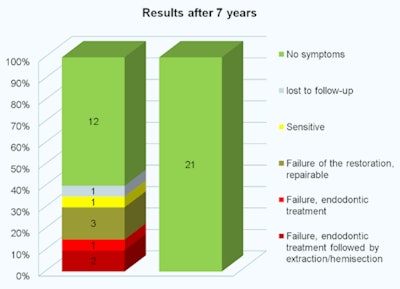 |
| Chart courtesy of Dr. Niek Opdam. |
In response to a question from the IADR audience, Dr. Opdam said that no liner or base is needed in the repair of cracked teeth.
"It is a good choice not to do so. We showed in other clinical research that posterior composite restorations with a glass-ionomer lining are more likely to break over time than total-etch restorations," he said. "Moreover, the present study shows that a posterior composite restoration placed with a three-step etch and rinse system is able to reduce complaints from patients. Therefore, the often-claimed reduction of postoperative sensitivity due to the application of a liner or base makes no sense."




